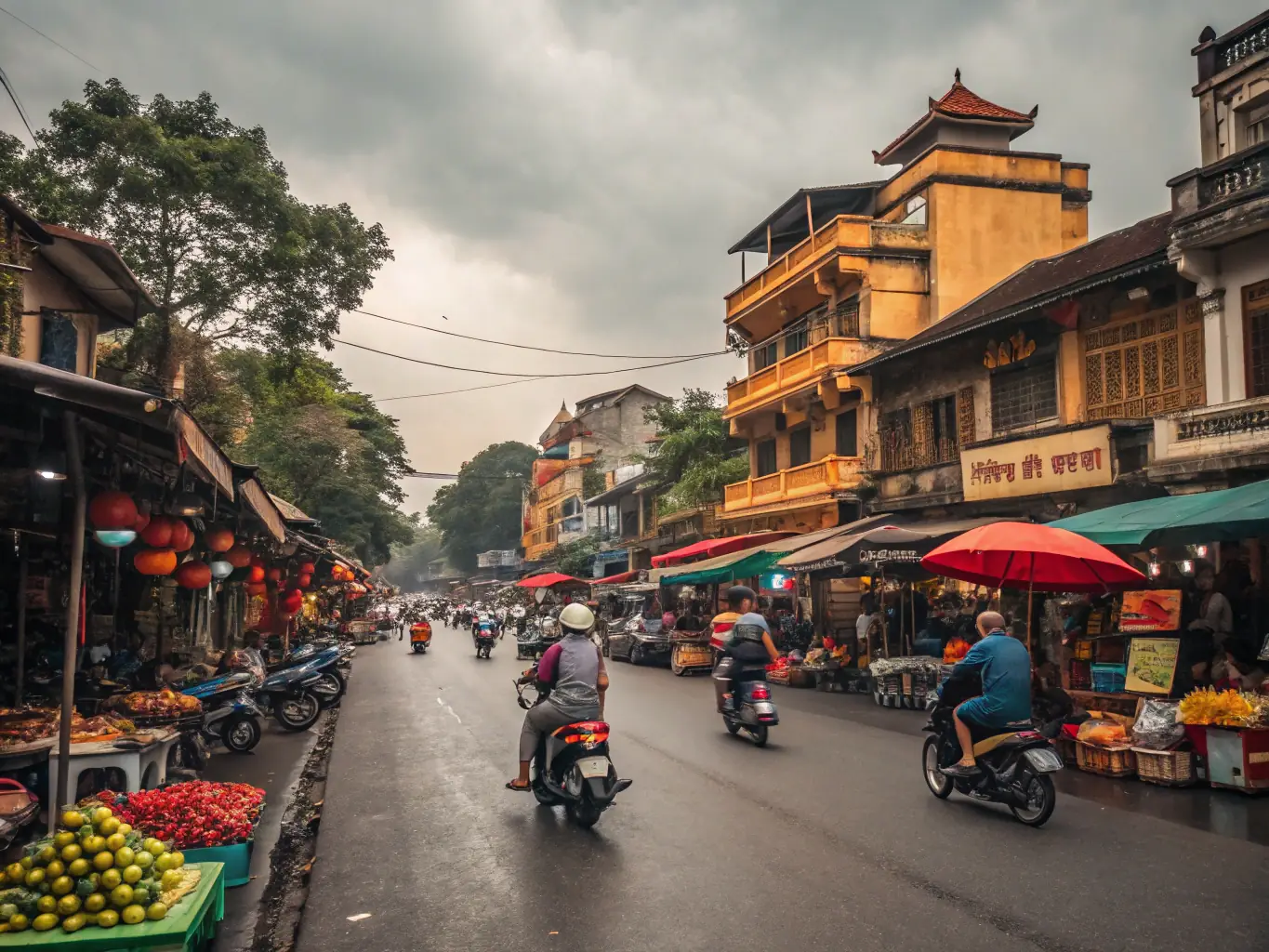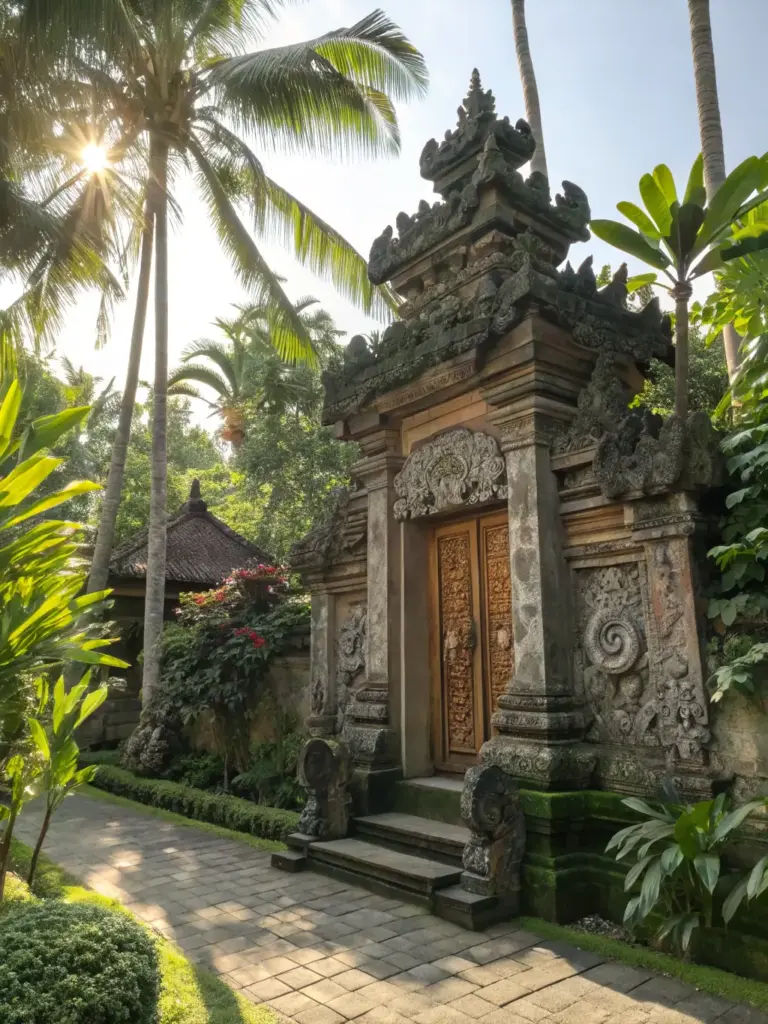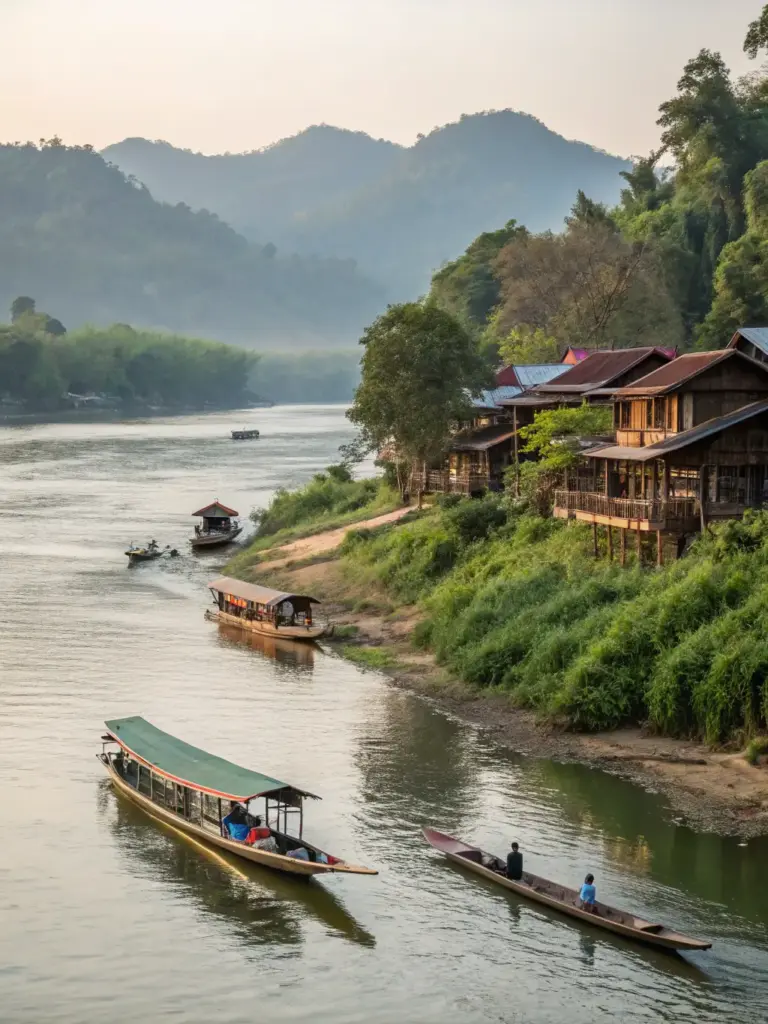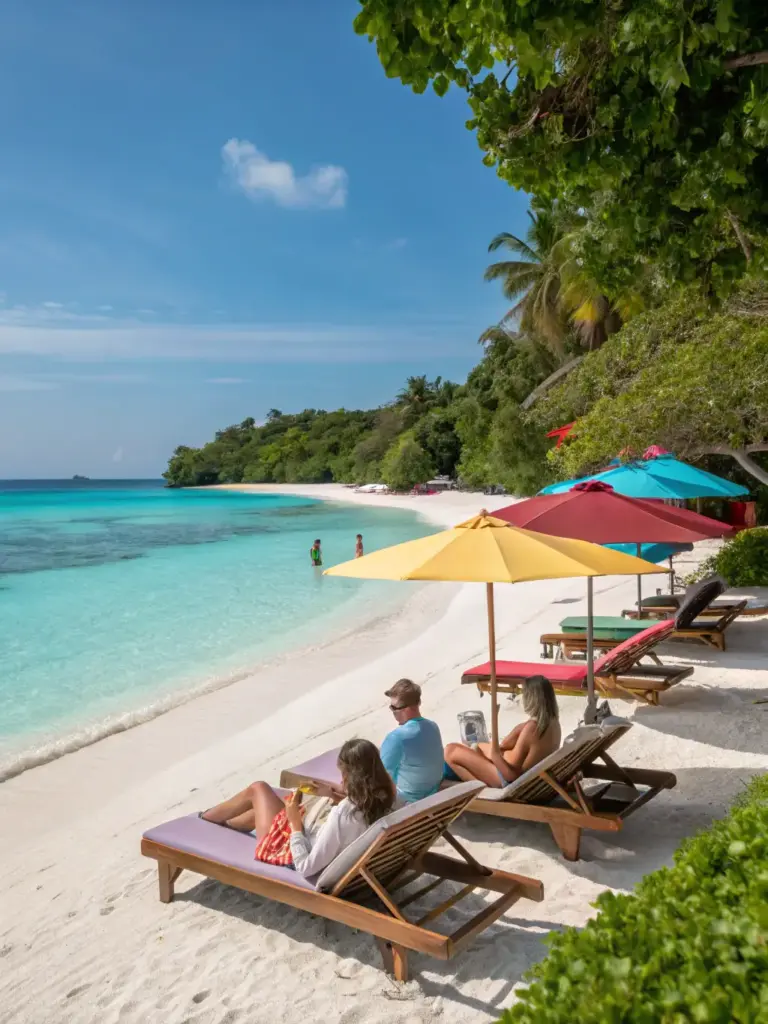Vietnam stands out as a prime destination for an enriching cultural journey. It’s a place where ancient traditions blend seamlessly with the energy of modern life, offering travelers a truly unique experience. You’ll find bustling cities, breathtaking natural scenery, and incredibly welcoming people ready to share their homeland with you.
Prepare for an adventure that goes beyond typical tourist sites. This trip promises authentic encounters, deeper connections, and memories that truly capture the spirit of Vietnam.
Savoring the Flavors: A Culinary Adventure Through Vietnam
Vietnamese cuisine is a central part of its culture. It’s an adventure for your taste buds, known for fresh ingredients and a perfect balance of sweet, sour, salty, spicy, and umami flavors. Eating in Vietnam is also a social experience, often shared with family and friends. We strongly encourage you to try the street food and take a cooking class. This will give you a real taste of local life.
Street Food Delights: Iconic Dishes and Local Secrets
Exploring Vietnam’s streets means discovering amazing food stalls on nearly every corner. Each dish tells a story, and the experience of eating at these local spots is unforgettable. You get to interact with friendly vendors, watch them prepare your meal, and uncover hidden culinary gems.
Here are some must-try street food dishes:
- Pho, the iconic noodle soup, is a cornerstone of Vietnamese cuisine. In Hanoi, you might find a clearer broth with more subtle spices, often served with tender slices of beef. Travel south to Ho Chi Minh City, and pho often comes with a richer, slightly sweeter broth, a wider array of herbs, and sometimes even chicken. Each bowl is a warm hug.
- Banh Mi is more than just a sandwich; it’s a symphony of textures and flavors. A crispy baguette holds savory grilled meats, fresh herbs, pickled vegetables, and a smear of pate. It’s perfect for a quick and satisfying meal any time of day.
- Bun Cha, particularly famous in Hanoi, features grilled pork patties and slices of pork belly served over vermicelli noodles with a flavorful dipping sauce. It’s often accompanied by a basket of fresh herbs. It’s a truly satisfying meal.
- Vietnamese coffee (Ca Phe Sua Da) is a strong, dark roast served with condensed milk, either hot or over ice. It’s a stimulating treat and a truly delicious pick-me-up that you will want to have more than once. The slow drip preparation is part of its charm.
Whether you’re sampling these dishes or trying something new, street food offers a genuine glimpse into Vietnam’s daily life.
Beyond the Plate: Markets, Cooking Classes, and Family Meals
The culinary journey in Vietnam extends far beyond just eating. Visiting local markets provides a deeper understanding of where these incredible flavors come from. Take Ben Thanh Market in Ho Chi Minh City or Dong Xuan Market in Hanoi. Here, you will see a vibrant array of fresh produce, spices, meats, and seafood. You can observe how locals select their ingredients, learning about the seasonality and freshness that define Vietnamese cooking. It’s a feast for your senses.
Consider taking a cooking class to truly immerse yourself. These classes teach you traditional techniques and the careful balance of sweet, sour, salty, and spicy. You will learn how to make popular dishes yourself, which gives you skills to take home. It’s a wonderful way to connect with the culture.
Food also plays a significant role in Vietnamese family life. Family meals are central gatherings, symbolizing unity and care. Dishes are often shared, creating a communal experience where everyone enjoys food prepared with love. Understanding this aspect shows how food connects Vietnamese families and strengthens their bonds. You learn that food is more than just sustenance here.
Ancient Echoes and Modern Rhythms: Exploring Vietnam’s History and Traditions
Vietnam’s story is a profound tapestry woven with ancient dynasties, colonial influences, and struggles for independence. This rich history isn’t just found in textbooks; it lives and breathes in the country’s landscapes, its people, and its enduring traditions. Understanding Vietnam’s past offers a deeper appreciation for its vibrant present and helps travelers connect with the national identity that continues to thrive today.
Historic Landmarks: Palaces, Temples, and War Remnants
Vietnam’s historical sites are open books, telling tales of emperors, scholars, and everyday heroes. Each location offers a window into a different era, revealing the complexities of the nation’s journey.
When you visit these places, you are doing more than simply observing old buildings. You are walking through chapters of history.
- In Hue, the former imperial capital, stands The Citadel. This massive walled complex once housed the Nguyen Dynasty emperors. Inside, you will find ornate palaces, temples, and the Forbidden Purple City, which was reserved exclusively for the emperor and his family. The Citadel tells a story of power, artistry, and the rise and fall of dynasties. It reflects the grandeur of Vietnam’s imperial past.
- Hoi An, an ancient trading port, offers a different kind of historical charm. Its well-preserved Old Town is a UNESCO World Heritage site. Wander through narrow streets lined with old merchant houses. Visit the iconic Japanese Covered Bridge, dating back to the 18th century. Hoi An’s buildings show a mix of Vietnamese, Chinese, and Japanese architectural styles. These structures speak of a bustling port where cultures merged and thrived for centuries.
- Hanoi, the current capital, holds significant historical sites that span various eras.
- Hoan Kiem Lake (Lake of the Returned Sword) is central to many Hanoi legends, including the tale of Emperor Le Loi and a magical sword.
- The Temple of Literature (Van Mieu Quoc Tu Giam) was Vietnam’s first national university. It dates back to 1070. It honors Confucius and celebrates the country’s devotion to education and scholarship.
- Ho Chi Minh City (formerly Saigon) offers insights into more recent, poignant history.
- The War Remnants Museum presents a powerful, unvarnished look at the Vietnam War. Its exhibits include military hardware, photographs, and detailed accounts. It helps visitors understand the war’s impact on the country.
- The Reunification Palace, once the presidential palace of South Vietnam, symbolizes the end of the war. It remains largely as it was in 1975, offering a glimpse into a pivotal moment in Vietnamese history.
These landmarks are not just brick and stone; they are storytellers. They invite you to listen to the sagas of emperors, the echoes of ancient trade, and the resilience of a nation through conflict and peace.
Festivals and Folk Arts: Participating in Living Traditions
Vietnam’s cultural heart beats strongly through its vibrant festivals and traditional art forms. These living traditions offer travelers special ways to connect with local customs and celebrations. Getting involved in festivals or seeing folk art performances can be truly eye-opening.
Here are some ways to experience Vietnam’s living traditions:
- Festivals are central to Vietnamese life, marking important events and honoring ancestors.
- Tet Nguyen Dan (Tet), the Lunar New Year, is the most important festival. It is a time for family reunions, traditional foods, and temple visits. While public celebrations are festive, Tet is primarily a family holiday.
- The Hue Festival, held biennially, celebrates the city’s imperial heritage with elaborate performances, traditional games, and culinary showcases. It brings history to life through art.
- Hoi An hosts a monthly Lantern Festival. On the 14th day of each lunar month, the town turns off its electric lights. Hundreds of colorful lanterns illuminate the streets. This creates a magical atmosphere. You can release your own lantern onto the Thu Bon River.
- Traditional Arts offer another window into Vietnamese culture.
- Water puppetry (Mua Roi Nuoc) is a unique art form originating from the Red River Delta. Puppeteers stand in waist-deep water, manipulating puppets over a small stage. The shows often depict rural life, historical events, and local legends, accompanied by traditional music. It’s an enchanting and truly Vietnamese spectacle.
- Traditional music encompasses various styles. Folk music genres like Ca tru (chamber singing) and Quan ho (love duet singing) are recognized by UNESCO. They feature unique vocal techniques and instruments. Attending a performance allows you to hear the sounds that have resonated through generations.
- Classical dance often tells stories from myths and history. These graceful performances are often seen at festivals or special cultural venues.
To witness some of these traditions, look for local performances in cities like Hanoi or Hoi An. Many cultural centers and theaters host regular shows. You might even find opportunities to try your hand at making a lantern or learning a few basic steps of a traditional dance. Participating, even in a small way, brings you closer to the heart of Vietnam’s enduring culture.
The Soul of the Land: Connecting with Vietnamese People and Daily Life
Truly experiencing Vietnam goes beyond its delicious food and ancient sites. It involves connecting with the people and seeing their daily lives. When you open yourself to these interactions, you gain a deeper understanding of the country’s heart and soul. This section will guide you through respectful interactions and encourage you to explore life beyond the major cities. It is here that you will find the real spirit of Vietnam.
Local Etiquette and Customs: Navigating with Respect
When you travel in Vietnam, showing respect for local customs makes a huge difference. Small gestures can go a long way in building positive interactions. Understanding a few key etiquette points will help you navigate daily life smoothly and respectfully.
Consider these practical tips for engaging with Vietnamese culture:
- Greetings: A simple “Xin Chao” (seen chow) means hello and is always appreciated. When greeting someone older or in a position of authority, a slight bow of the head can show respect.
- Dress Code: Modesty is key, especially when visiting religious sites like temples or pagodas. Shoulders and knees should be covered. This shows respect for sacred spaces.
- Table Manners:
- Wait for the eldest person to start eating before you do.
- Use both hands when offering or receiving something, especially money or gifts. This gesture conveys respect and appreciation.
- Do not stick your chopsticks upright in your rice bowl. This is similar to incense sticks at an altar and can be seen as bad luck or an offering to the dead.
- Gift-Giving: If you are invited into a home, a small gift is a thoughtful gesture. Fruit, flowers, or a small token from your home country are suitable choices. Offer and receive gifts with both hands.
- Communication: Speak softly and avoid direct confrontation or raising your voice. Harmony is highly valued. A smile can bridge many language barriers.
Remember, these customs are not strict rules, but rather gentle guidelines for showing consideration. Your effort to be mindful will be genuinely appreciated by the Vietnamese people.
Rural Charms and Diverse Lifestyles: Venturing Beyond the Cities
While Vietnam’s cities offer excitement, the country’s rural areas reveal a different side of life. Stepping away from urban centers allows you to see diverse lifestyles and connect with ethnic minority communities. These experiences provide a richer, more authentic view of Vietnam.
Consider exploring these regions for a deeper experience:
- Sapa: Located in the northern mountains, Sapa is famous for its stunning terraced rice fields. It is also home to various ethnic minority groups, like the Hmong and Dao people. You can go trekking through vibrant green landscapes, visit traditional villages, and learn about their unique customs. A homestay in Sapa offers a truly immersive experience. You get to live with a local family, share meals, and participate in their daily routines. This provides insights into their farming practices and traditional crafts.
- Mekong Delta: In the south, the Mekong Delta is a network of rivers and fertile lands. Life here revolves around the water. You can explore floating markets, where vendors sell goods from their boats, creating a lively spectacle. Visit local craft workshops to see how people make traditional items. Taking a boat trip through the small canals brings you close to the rhythm of delta life. Homestays are also available here, giving you the chance to see fish farming or fruit cultivation firsthand.
Venturing into these areas allows you to appreciate the slower pace of rural life. You will witness ancient traditions still thriving and discover the incredible hospitality of people who live close to the land. These experiences provide unique memories and a profound sense of connection to Vietnam’s diverse cultural fabric.
Conclusion
A journey through Vietnam offers much more than just sightseeing; it provides a deep dive into a vibrant culture. You will discover incredible flavors, walk through ancient history, and connect with genuinely kind people. Remember that an open mind and respect for local traditions will make your experience truly special. Engage with the communities, try the street food, and immerse yourself in their daily life. This isn’t just a trip you are planning, it is an opportunity to form a lasting connection with a fascinating country. Plan your authentic Vietnamese adventure today.






